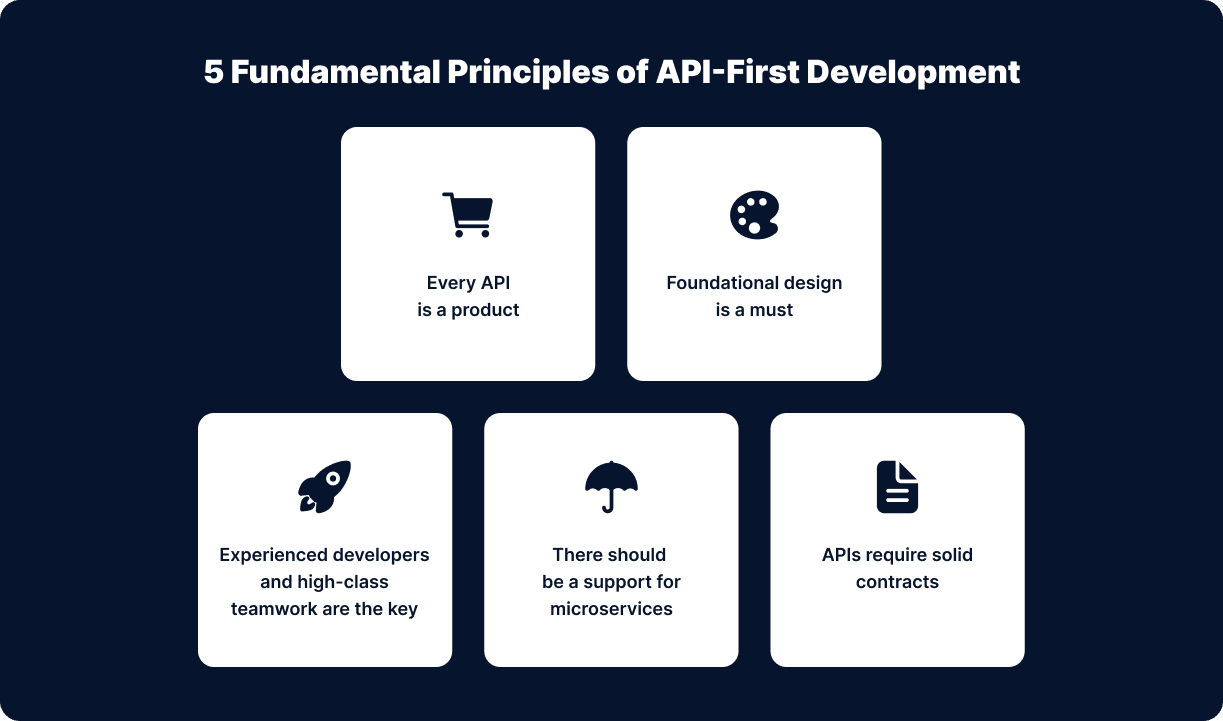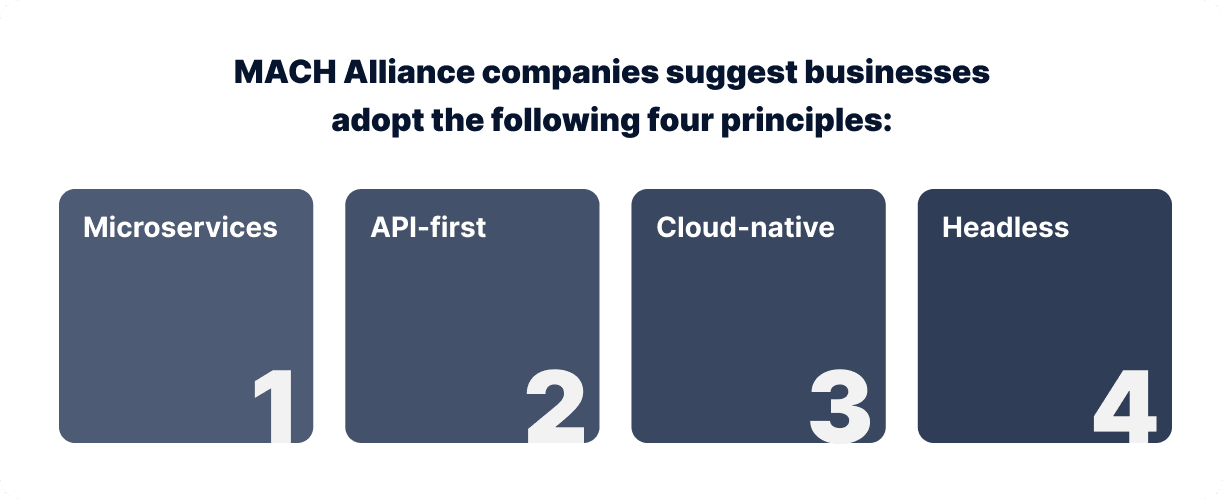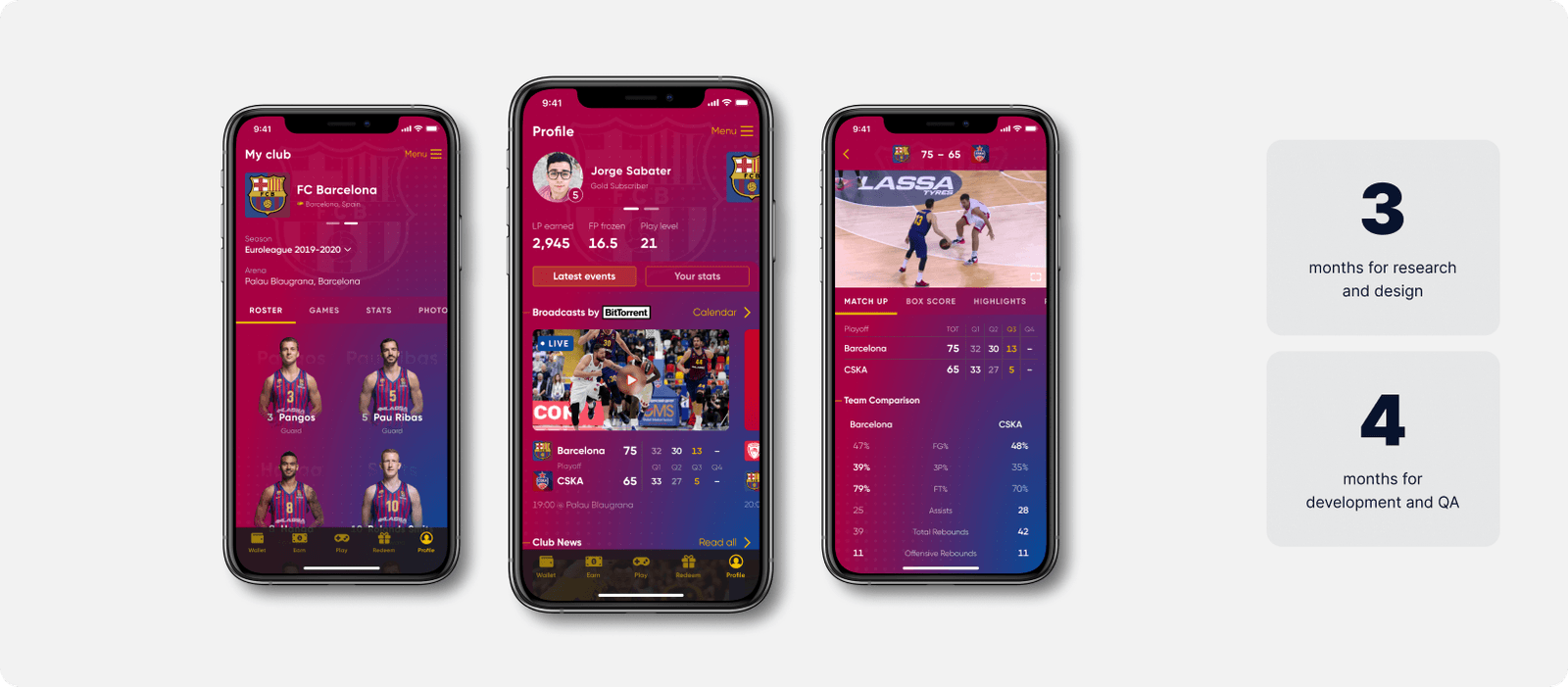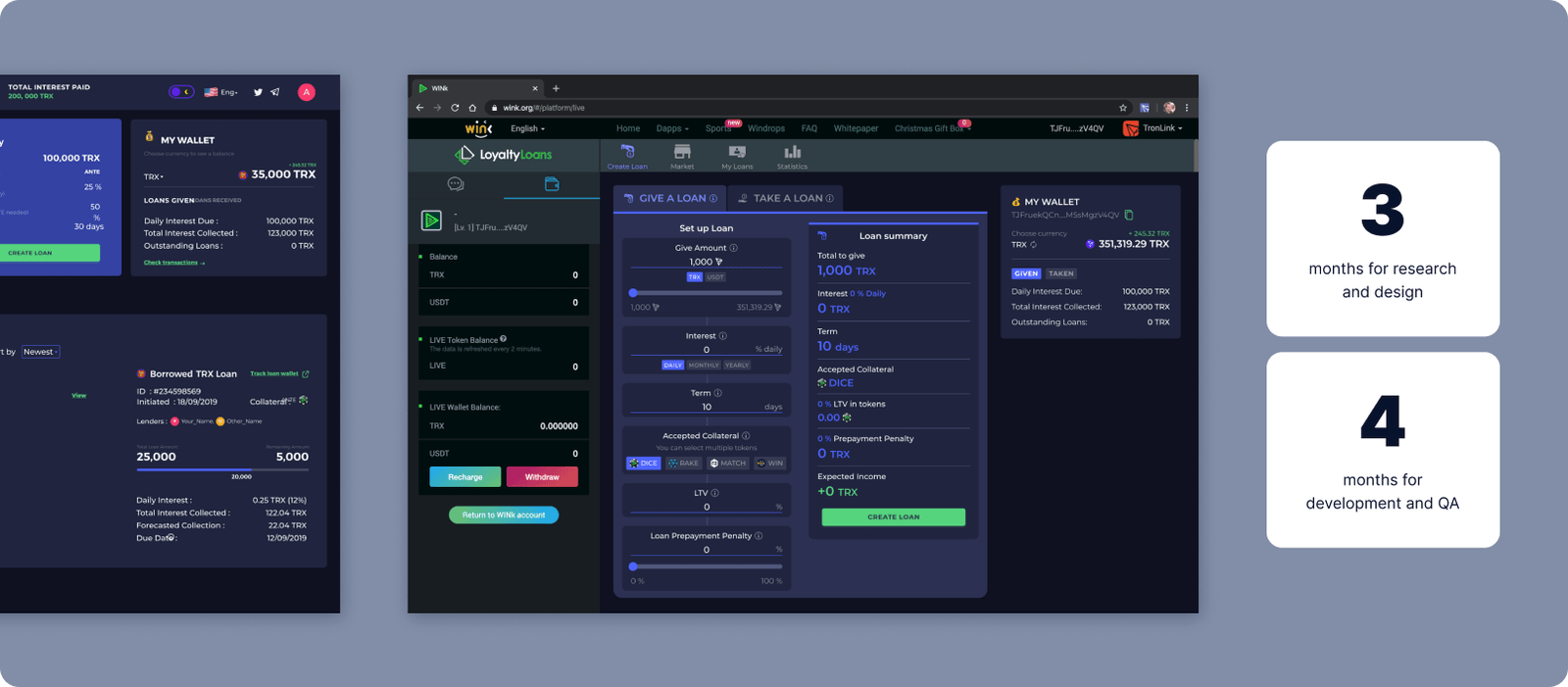
June 21, 2023
API-First Design Approach To Product Development
Application Programming Interface (API) integrations offer businesses higher performance and enable innovative automation. Moreover, they foster greater employee productivity and enhance customer experience. With the industry's rapid expansion, more developers and technology leaders should understand how to succeed with these initiatives. If you strive to learn the requirements for developing a solid, practical, scalable API program to produce business value, this article is for you.
But how to get started? And what are the key considerations?
We will examine the most popular approaches to your API strategy, reviewing the API-first method and API-first design in detail. Also, we will outline the benefits and core principles of the API-first approach. Finally, this article will discuss the relevance and implementation of the design-first process based on Artkai's expertise in web app, Node.js, Python API, and MACH development.
Approaches to Your API Strategy
Suppose you have an idea for an Application Programming Interface that can benefit your company. What should you do first? Kick off with outlining the business requirements for the API. Describe it in a specification language. Then, adopt your idea and make it into an API-first product. Here are the most popular approaches:

Now, let’s review them in more detail.
Code-First
The code-first or integration-first approach regards APIs as tactical implementations. They fulfill a specific need or one use case. For instance, they may bring two systems within a more extensive project or act as endpoints driving a user interface. Therefore, the API correctness for the specific implementation is prioritized before considering how to use it more broadly.
Going straight to coding after receiving the business requirements hastens the API launch. If it just offers a few endpoints, that’s the fastest alternative. However, code-first entirely focuses on developers and doesn’t concern other potential API users.
And that’s where the primary reason for code-first strategy failure hides. An API's success depends on its acceptance and use by an increasing number of consumers. And most of its users aren’t programmers or tech-savvy individuals looking for quick and result-driven solutions. An ordinary user won't use an API if it's unclear and inappropriate for their situation.
As a result, the code-first approach limits the API’s value. This mindset prevents organizations from using the most significant economic opportunities. Moreover, it limits their ability to change in response to future developments. Once created, code-first APIs typically don’t change. Therefore, they don’t fit for investigating and finding new perspectives.
API-First
The promotion of this strategy is constantly growing. With this approach, a company views APIs as its primary goal. It recognizes that they are essential business assets that support its core operations.
What Does an API-First Approach Mean?
The API-first approach treats Application Programming Interfaces as "first-class citizens." Every project’s aspect is based on the assumption that client applications will adopt them and that mobile devices will use the final output. This approach ensures a contract API operation. It employs an API description language to create consistent and reusable Application Programming Interfaces.
Setting up a contract requires devoting extra time to API design. Before developing any code, it often needs further planning and consultation with the stakeholders who provide feedback on the architecture.
How API-First Approach Works?
To adopt an API-first development model, an organization should cover the following goals:
- prioritize APIs
- understand the function of partner, private, and public APIs for your business
- be aware of their lifecycle and the necessary tooling
In API-first, developers construct the Application Programming Interface before writing a single line of code. This way, internal and external applications connect seamlessly with the core app.
Instead of rushing to create an application and building an API afterward, API-first involves prioritizing the Application Programming Interfaces. Simply put, you focus on the value they provide to your business. Therefore, you can adapt the program by many business units for various functions through the API. Such initiatives are ongoing endeavors. APIs are essential building blocks you should update and maintain.
Many recall public APIs first. However, software engineers focus on internal or private APIs. They ensure valuable insights and let applications share crucial data and services. A team completes most of these tasks automatically, providing visibility across the organization.
Partner APIs come into play when the organization's needs change and interaction with business partners becomes necessary. With their help, businesses share their APIs with only a few users and clients. It opens up possibilities for collaboration, establishing strategic business alliances, and obtaining focused customer feedback.
Benefits of an API-First Approach for Businesses
Thanks to the numerous advantages of the API-first strategy, Application Programming Interfaces are quickly becoming the fundamental components of modern software. This trend mainly affects large businesses. Here are just a few benefits API-first brings to an enterprise:
Boosting Developer Productivity
Developers and product teams experience a rise in productivity when embracing an API-first development paradigm. That’s due to more rapid communication throughout the Application Programming Interface lifecycle.
In this approach, developers create well-known workspaces to consolidate API work. As a result, team members access artifacts, documentation, mock servers, environments, tests, monitors, history, and more. Recurrent procedures help optimize API design, development, deployment, operation, and microservices.
Enhancing Software Quality
The benefits of developing Application Programming Interfaces lead to higher-quality software since developers spend less time creating robust solutions. Moreover, this approach prevents defects from entering production. Thus, quality engineers identify and eliminate problems sooner. Furthermore, security engineers start working together early.
All in all, operations, quality, and security teams gain significant improvements with an API-first strategy. Additionally, these experts work efficiently and directly with development teams thanks to the API-first approach.
Streamlining Compliance and Governance
Architects consistently structure and manage the entire Application Programming Interface landscape through the Private API Network. They inject design and establish rules for the development phase. Discoverability and observability are integral parts of the workflow by default with the API-first approach. It reduces friction when responding to inquiries and regulatory obligations.
API-first also offers visibility throughout your operations. It assists you in identifying areas of consistency or any issues in the Application Programming Interface architecture. Then, choose the proper direction to update, direct, and actualize the change. This way, you grasp the current status of your complex enterprise system.
Establishing a Solid API Security Perimeter
Firewalls and current application safety procedures alone are far less effective than an API-first security perimeter. Each Application Programming Interface and microservice has a specific security collection. Data protection specialists define this collection. Then, developers implement it as part of the standard API development lifecycle.
Even the most basic APIs must undergo a minimum screening and inspection before deploying or modifying them with each version. Security is critical regardless of the application type and how long an Application Programming Interface will remain actual. That’s why consistently implementing it across the teams using it is essential.
The Fundamental Principles of API-First Development
OK, now we learned how this development approach works. But what is API-first, exactly? Some misuse this term, so it may take time to determine which products are genuinely API-first and which aren't. But no worries. Here are the five guiding principles for this development approach to help you understand its true meaning.

Every API Is a Product
Preparing Application Programming Interfaces for public consumption is challenging. So first, consider how users will interact with your API if you take an API-first approach. How will you inform them of its capability, and how will you maintain it? Also, think of the tools to construct the API. Finally, keep in mind compatibility, security, and simplicity standards.
When creating a product, adhere to the essential industry standards. It entails implementing fundamental software design and development cycles for APIs producing high-quality products. Developing such software includes the following:
- upfront design and specifications
- peer programming
- technology selections
- programming language support compatible with the API's goals
- the choice between on-site and cloud hosting
- testing
- user research
Foundational Design
In the API-first approach, developers should first focus on Application Programming Interfaces. Software businesses frequently try to embrace API after developing a product. It usually entails building APIs on top of an existing platform. Indeed, this method has some advantages, like enhancing core functionality and increasing automation. However, it’s not an API-first strategy.
API-first development treats Application Programming Interfaces as the foundation. It ensures the platform's capability is available through the APIs instead of pre-built or opinionated software solutions or experiences.
Teamwork and Impact
API-first development goes beyond merely following technical guidelines. It involves interacting and working. This approach focuses more on your API-related teams and activities than on the intricacies of each Application Programming Interface. Note that prioritizing APIs needs solid product management leaders. They should be knowledgeable in this field and have the necessary technical skills.
API-first also requires experienced developers. Although they excel at providing outstanding end-user experiences, designing an extraordinary engineering or developer experience requires another skill set. Additionally, you need a customer success function to assist with deployment, handle continuing questions, and respond to user feedback.
Support For Microservices
Companies reject all-in-one platforms in favor of reusable components, much like automakers do with generic parts. Online merchants don’t prioritize purchasing all-in-one e-commerce platforms. Instead, they buy the best reusable components and combine them to develop enterprise products suited to their needs.
And since your components should communicate smoothly, microservices are only possible with Application Programming Interfaces. If you use an API-first approach, developers can simply connect your APIs to theirs with microservice architecture.
The API Contract
When creating open and accessible APIs, companies reuse, redeploy, and distribute functionality. Consistent API description language encourages this approach. It establishes a contract outlining the expected behavior of an Application Programming Interface. However, selecting a contract requires more time considering an API-first architecture. Besides, it often needs more coordination and planning.
What Role Does API-First Play Within the MACH Alliance?
Application Programming Interfaces and API-first development exist within a larger technological ecosystem. API-first and the MACH Alliance principles usually support each other. Independent tech firms that support open, best-of-breed technology systems come together under the MACH Alliance umbrella.
MACH Alliance companies believe that corporate systems are outdated. Therefore, they advocate switching to the "agile and nimble, always up to date" MACH environment.

As you can see, API-first development is an essential component of the MACH ecosystem and the primary trend in enterprise technology.
API Design-First
In the design-first approach, first API endeavors should reconsider the design process. Before writing any code, they establish APIs in an iterative manner that people and machines understand. Every team should utilize tools using the same architecture and speaking the same language.
While the API is critical, the design process guarantees to involve all stakeholders and meet their demands. It’s a vital distinction from an API-first approach. Beginning with defining the Application Programming Interface's purpose and function, design-first invites technical and non-technical participants to the development process.
At the same time, the design-first approach requires some planning upfront. When it's time to start writing code, this phase ensures that developers won't need to remove and rework it later. It aids in developing iterative, practical APIs. They result in a better, more scalable program and value to your company overall.
Benefits of an API Design-First Approach
The API design-first approach offers developers, end users, and internal partners several advantages. Let’s explore each in more detail.
Cost-Effectiveness and Engineering Efficiency
Design-first development and maintenance results in high-quality components for upcoming APIs. The team should build each feature once. Reusability for all parts enables significant cost savings in development time while accelerating the release of new APIs.
Enhanced API Security
Application Programming Interfaces are often a target for malware and hackers. That’s because of their visibility and alleged history of security flaws and vulnerabilities. Hackers can take advantage of unprotected API endpoints if it lacks appropriate design solutions. In contrast, the purposeful design incorporates security into your API strategy initially.
Improved Internal Team Coordination
Large and cross-functional teams are often difficult to organize. More specifically, it’s challenging to include new stakeholders midway through a project and keep them on the same page. However, with a design-first approach, you involve relevant parties immediately and contribute to the API's development. The Application Programming Interface is inclusive and suits the potential needs when all stakeholders participate.
Expanded Opportunities for Innovation and Growth
The API design-first approach significantly fosters innovation and growth. It improves collaboration, accelerates time-to-market, and enhances user experience. Moreover, a clear, shared understanding of the API promotes better synergy among team members, leading to creative use cases and applications.
This approach facilitates parallel development, reducing time-to-market and promoting quicker business growth. Additionally, a well-crafted API design ensures consistent and robust interfaces. As a result, it offers better user experiences and easier third-party integrations, leading to innovative partnerships.
Does Design-First Actually Work?
The Calendly case study proves that design-first is transforming API development. This meeting scheduling software team created a new API platform using this methodology. According to Dmitry Pashkevich, an application architect at Calendly, employing the design-first approach helped the company achieve improved implementation quality, consistency, governance, and up-to-date documentation.
How to Implement API-First Approach
Wondering how to enhance your organization's API-first strategy? Emphasize decentralized governance, enhanced automation, and consistency using a tool like style guides. This way, your API program will benefit from reducing its complexity.
Aim for Consistency and Good Governance from the Start
To ensure a predictable user experience, an API should maintain design consistency. It’s the primary distinction between a collection of APIs and a single unified platform. You can enforce standards by incorporating style guidelines into your API strategy. It allows you to maintain consistency and ensure intelligent design.
Your Application Programming Interface also needs to be well-governed. Standardization will soon become obsolete without governing as an essential part of program design. Applying regulations and guidelines to your APIs, such as descriptions, contracts, designs, protocols, and reviews, is the primary goal of governance. It helps all your APIs maintain consistency even when various developers create them. Thus, a good governance structure will ensure that each API is high-quality and discoverable.
Consider Your APIs Products
As the next step in implementing the API-first approach, ensure you view your APIs as products. This software development idea is gaining popularity rapidly. Approach APIs as any other product people can use or consume. When you see them as products, using and actively supporting them is way easier.
The planning and architectural choices you make for a product belong to the API-first design process. Like with product design, excellent principles satisfy initial expectations and continue to behave consistently and reliably. Their design also influences the user experience.
Winning Stakeholder Support
Gaining all relevant stakeholders’ support is one of the crucial aspects of a design-first approach. Lay the groundwork for your API program with the buy-in of developers and executives, early end-user feedback, and the viewpoints of other partners or internal personnel interacting with it.
The best way to win over company leaders is to focus on the business benefit, ideally with solid KPIs and proof-of-concept. Even if you only have a small amount of data, move them up the chain and demonstrate continuous development over time. Once you have that support, consider how to turn this mandate into an organizational transformation. Also, determine the necessary critical actors.
Create a platform where developers voice their opinions freely and test out ideas to win them over. Then, find stakeholders inside a development organization with relationship clout. Finally, figure out how to work with them to construct your API strategy. A diversified team with rich expertise, use cases, and experiences is vital for your API program.
Finally, ask end users and early adopters for their opinions on your product. Remember that if they don’t use something, it’s not practical. Your API program must bring a satisfying user experience. A method that puts design first ensures that the developers never lose sight of the end-user experience.
Artkai Expertise
Artkai is a customer-centric digital product development company that offers full-cycle services for creating functional, high-quality web applications. You can improve your market position and win over clients with our perfect web solutions. Our enterprise web application development services provide predictable solutions for your software needs.
Full-stack developers at Artkai handle all back-end development requirements, including APIs, server-side scripting, cloud integration, and database setup. We will create a reliable and secure server-side architecture for your online application, guaranteeing speedy app performance and easy scaling. Receive premium-level development services at all project stages, an expert market outlook, a committed expert team, and a versatile tech stack.
Our Python API development services include creating RESTful APIs with dependable frameworks like Pyramid, Flask, and Django. Node.js development entails building APIs using Node.js to integrate various apps and systems. Also, Node.js API development services assist companies in creating scalable, secure APIs that can process massive queries. On top of that, we offer seamless integration with other APIs and codes. Now, look at our case studies to see our team’s stunning results.
Loyalty App: Blockchain Mobile App Connecting Professional Sports and Fans
The client asked the Artkai team to create a brand-new mobile blockchain platform. They needed motion and visual design to encourage professional sports fans to turn their passion into profit. The app also offers the following opportunities:
- Create skill-based challenges.
- Earn Loyalty Points to buy sponsor products and merchandise.
- Participate in big tournaments to compete for sponsored prizes.
Our experts created a platform for professional sports clubs and leagues – Loyalty App. As a result, our client overcame the two fundamental problems with blockchain and sports: monetizing sports fans' activities and mass adoption. With the MatchNet API, fans create skill-based competitions with up to ten participants. Also, they earn a sizable quantity of Loyalty Points with daily payouts.

Loyalty Loans: P2P Loan Platform Supporting Integration With Any TRON dApp
The client turned to the Artkai team to create a web-based solution for borrowers, lenders, and cryptocurrency exchanges. The core objective was to make integration with different financial institutions more accessible. Artkai professionals built a simple-to-configure API that enables integrations into dApps of any frame size. With the help of this sophisticated platform, users access funds without selling their digital assets.
A loan platform we created is called Loyalty Loan. It offers consumers robust security and advantageous terms, fusing the best elements of conventional and modern finance. Customers who lend or borrow money using digital assets can receive interest. Thanks to an easy-to-use API, the platform works with any dApp, regardless of size and complexity.

Leverage API-First Design with Artkai
An API-first approach strongly impacts how trustworthy internal and external customers interact with digital services. The method has numerous cost, performance, scalability, and transparency advantages. Additionally, an API-first strategy improves infrastructure organization in corporate firms. However, design-first is a viable alternative to this approach.
API design is vital for modern software projects’ success. Starting with the design, you dive into the specifications immediately. This approach speeds up software development, preventing expensive bottlenecks. In addition, the design-first method increases engineering efficiency, improves API security, enhances team coordination, and takes advantage of growth opportunities.
Artkai's developers meet all back-end development requirements, including APIs, server-side scripting, cloud integration, and database setup. We are ready to create a safe and reliable server-side architecture for your app. With our development services, you choose speedy app operation and seamless scaling.
Contact us to discuss your solution and get an estimate.
Clients and Results
Schedule your free consultation
Don't miss this opportunity to explore the best path for your product. We are ready to delve into the specifics of your project, providing you with expert insights and optimal solutions.
Book your free sessionRead More
Explore articles from Artkai - we have lots of stories to tell
Join us to do the best work of your life
Together we advance the human experience through design.